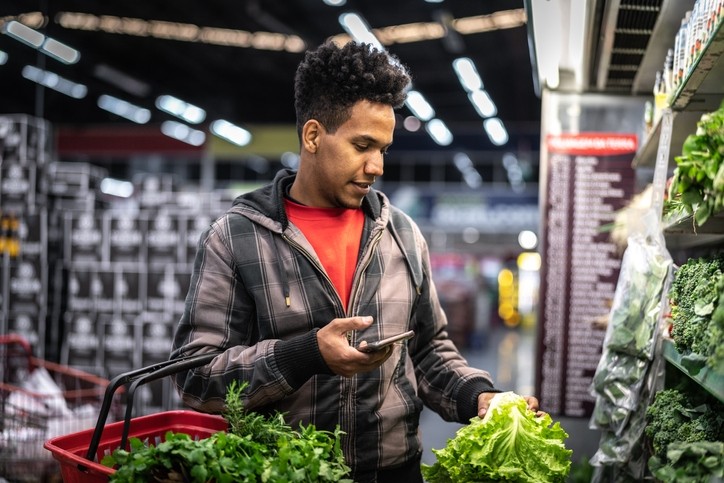Natural Products Expo West
Diversifying leadership, consumer-base represents significant growth potential for natural, organic brands

Traditionally natural and organic product consumers have skewed more heavily white than the population – reflecting a lack of diversity among stakeholders’ boards and leadership, and potentially limiting sales and other opportunities. But in recent years, a handful of industry leaders working together as the J.E.D.I. (justice, equity, diversity and inclusion) Collaborative have strived to diversify the industry and consumer base to drive equity and fuel growth.
In the three years since the JEDI Collaborative was founded, preliminary data gathered by the group and New Hope show some progress toward increased diversity in the industry with the percentage of industry founders and board members who are people of color inching up. From 2019 to 2022, the percentage of founders who are people of color ticked up 1 percentage point to 24% and board member of color increased 6 percentage points to 18%. However, the proportion of CEOs of color fell from 22% in 2019 to 19% in 2022, as did that of leadership from 17% to 15% in the same period.
“Our industry has tended to be, from a leadership perspective, run by people are white and who are male,” but “early data shows that we’re making some progress in bringing more women and people of color into leadership positions,” Carlotta Mast, senior vice president and market leader for New Hope, said at Expo West.
However, she added, the subtle shifts between 2019 and 2022 are not statistically significant and “we just have so much more work to do.”
To help sway more companies to invest in diversity, equity and inclusion – both internally and through consumer engagement – Mast pointed to data from distributor KeHE’s DiverseTrade Program that shows more inclusive brands are winning in the marketplace.
According to KeHE, shoppers continue to seek brands supporting inclusiveness, as reflected in a 9% increase in consumer support for women owned brands in the 52 weeks ending Dec. 26, 2021. Likewise, data shows a 9.9% increase in consumer support for minority certified brands, a 2.9% increase in shoppers supporting brands that are National LGBT Chamber of Commerce certified and 53.3% increase in shoppers seeking veteran owned brands.
In addition, analysis of data from Nielsen and SPINS revealed an incremental growth opportunity of up to 17% among brands with customer bases that align with the US population.
Kathryn Peters, executive vice president at SPINS, explained to Expo West attendees that on average the top 20 CPG brands catered to white shoppers at a higher rate than the US population (68% vs 58%) and under indexed among shoppers who identified as Hispanic (14% vs.19%), Asian (4% vs 6%) and other (2% vs 6%). The percent of Black consumers buying the top 20 CPG brands accurately reflected the US population at 12%.
A closer look at the CPG brands in this group that had a more diverse consumer base that more accurately reflected the US population revealed faster year-over-year sales growth of 4% in the 52 weeks ending Jan. 23, 2022, compared to a year-over-year sales growth rate of only 0.6% among companies that do not cater to the population, Peters said.
“That 3.4% spread is massive for us,” and a “very powerful” argument for diversity, she added.
Diversification taps into emerging flavor trends
Embracing more diverse cultures and incorporating authentic flavors and foods from different heritages, also could help natural and organic brands tap into growing consumer demand for new and unexpected flavor combinations, added Mast.
She explained that in the past two years as many people stayed home to slow the spread of the coronavirus, they have become more exploratory in what they eat to help scratch their itch for adventure.
According to SPINS data, in the 52 weeks ending Dec. 26, 2021, demand for wasabi has increased 161%, sriracha 108%, arrabiatta 63%, seaweed 47% and 42% teriyaki. In addition, consumer interest in miso is up 38%, creole 25%, curry 20%, tamarind 20% and puttanesca 8%.
Reaching the wellness-leaning low-income shopper
Diversifying the appeal of and access to wellness-focused CPGs to lower-income households also represents incremental growth opportunity, Peters noted.
Currently, households that make less thank $40,000 a year represent only 27% of total wellness-oriented CPG sales, according to NielsenIQ data, which means there is significant growth potential, Peters noted.
She explained that wellness-leaning low-income households tend to buy more baby products, alcohol and fresh produce, and they under-index in beauty care products, tobacco and breads – a division that provides a roadmap for opportunity.
To reach low-income wellness-leaning shoppers, Peters said natural and organic brands will need to penetrate channels favored by this group but in which the industry has not traditionally had a heavy presence.
This includes dollar stores, mass merchandisers with supercenters, value grocery stores, drug stores and online – all at which low-income shoppers over-index. They are less likely to shop at conventional grocery stores, health food stores, warehouse clubs and premier fresh grocery stores, where natural and organic brands typically are featured more prominently.





